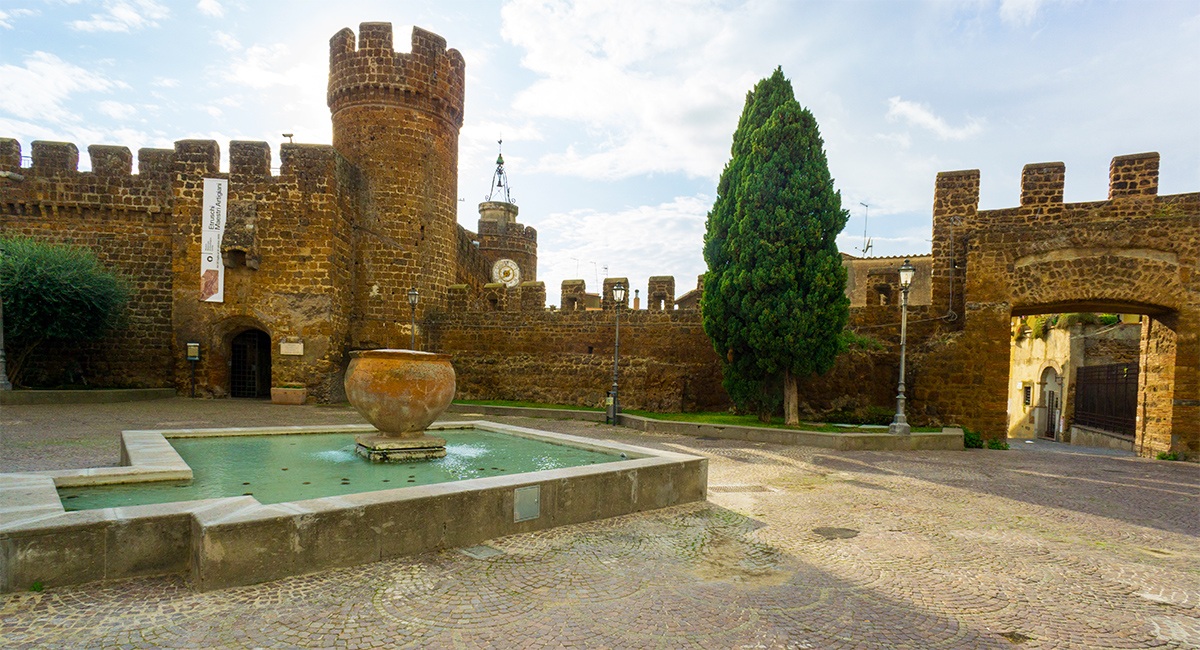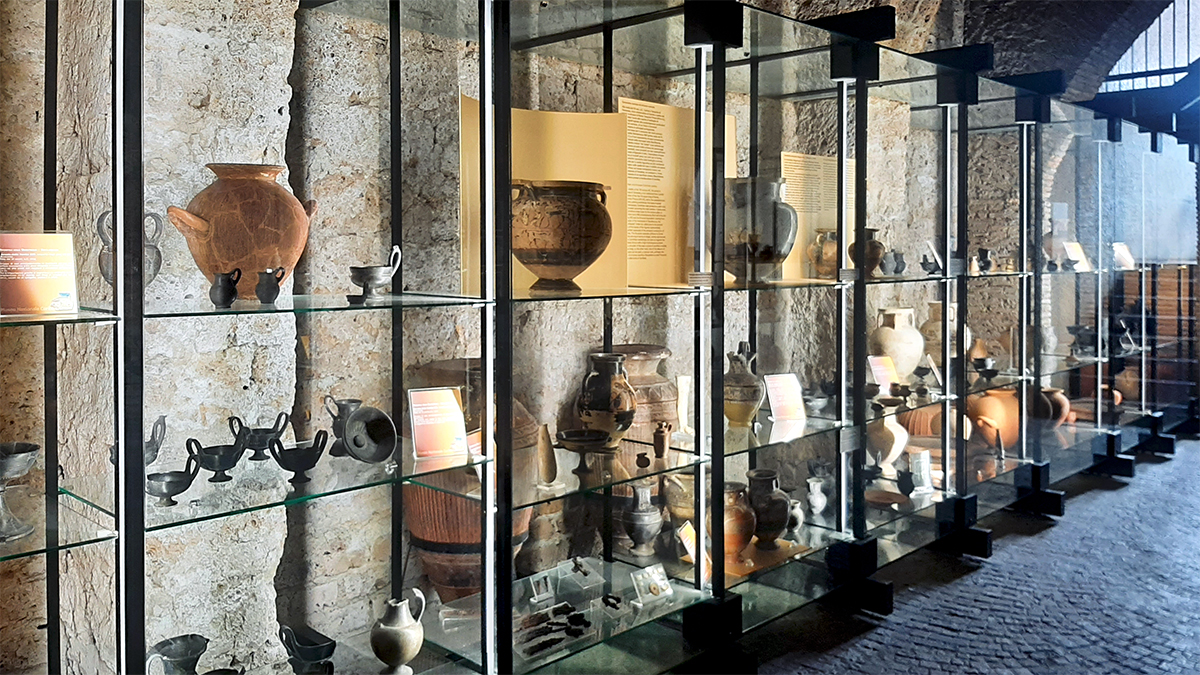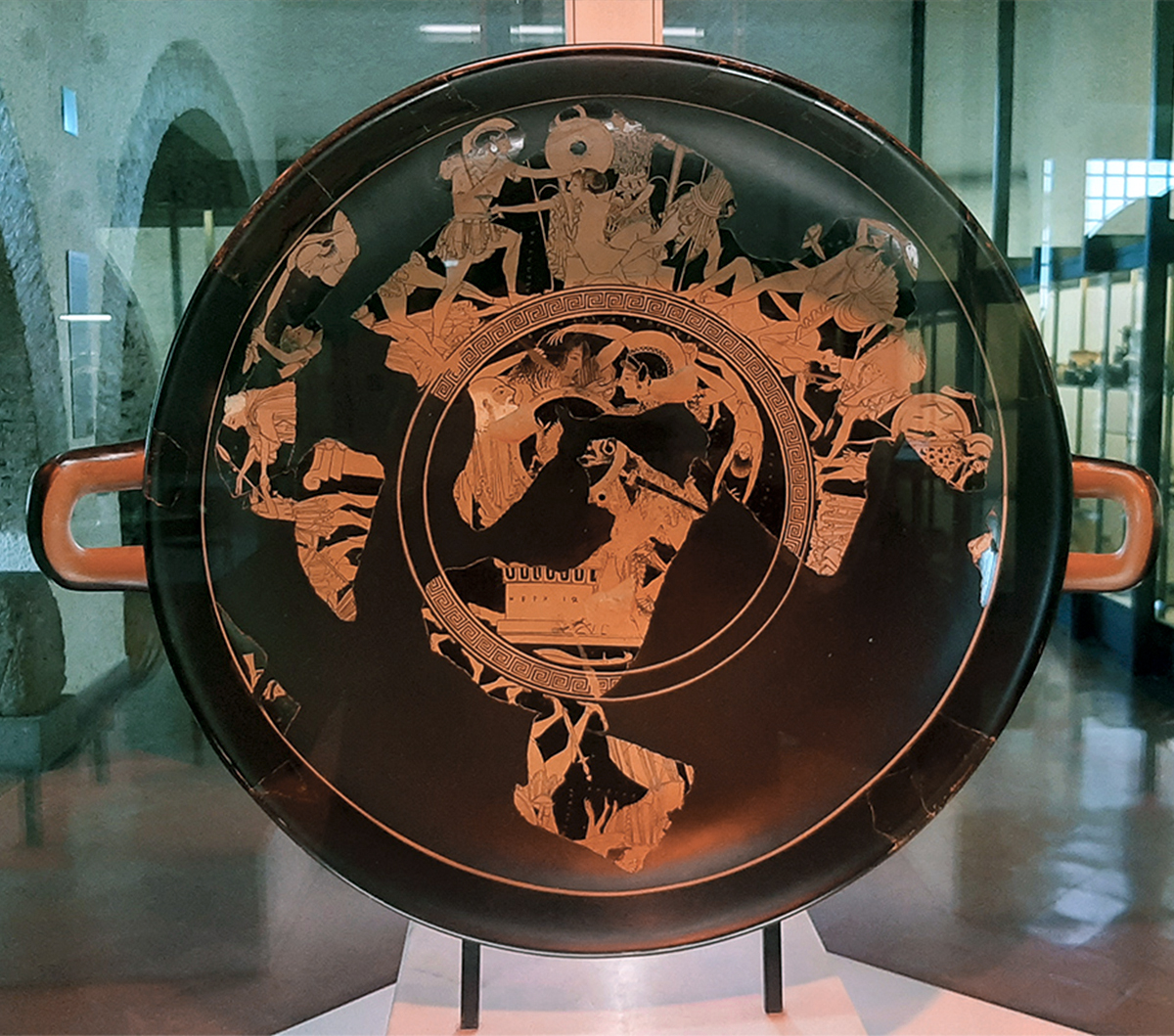Cerite National Archaeological Museum in Cerveteri
Discover the Cerite National Archaeological Museum in Cerveteri: opening hours, tickets and all the information about one of the most important Etruscan art museums in Italy.In the medieval village of Cerveteri, between Palazzo Ruspoli and the ancient Church of Santa Maria Maggiore, is the National Archaeological Museum Cerite.
This museum, named after the late Princess Claudia Ruspoli, is located inside a 13th century fortress overlooking Santa Maria's square.
Since 2019, together with the Etruscan Necropolis of Banditaccia, it is part of the Regional Directorate of Museums of Lazio and therefore it is now possible to buy a combined ticket (see the information section for all the details).
Now, let's move on to the most interesting aspect: the rich collection of items on display, among which there are two authentic masterpieces of Etruscan art.
If you want to find out what we are talking about, keep reading this article.

On the left, the entrance to the Cerite National Museum in Piazza Santa Maria (Cerveteri)
Visiting Cerite National Archaeological Museum
The visit begins in the entrance courtyard, where you can see architectural fragments and acephalous (headless) statues from the High Imperial period.
The courtyard leads to the second floor of the museum where many objects belonging to the grave goods of the oldest tombs of the necropolis of Sorbo (IX-VIII centuries B.C.).are exhibited, according to a chronological criterion.
The dark impasto urns and ossuaries are followed by the grave goods of the shaft tombs; personal ornaments and ceramics intended for the afterlife of the deceased.
The exhibition continues with other grave goods from chamber tombs (7th and 6th centuries BC) found in the necropolis of Monte Abatone and Banditaccia. Vessels, Etruscan "buccheri" and Etruscan-Corinthian ceramics, together with the vast collection of ceramics of Greek import, underline the important role of Cerveteri in the maritime economy of the Mediterranean.

Cerite National Archaeological Museum (Cerveteri) - first plant
The exhibition continues with other grave goods from chamber tombs (7th and 6th centuries BC) found in the necropolis of Monte Abatone and Banditaccia. Vessels, Etruscan "buccheri" and Etruscan-Corinthian ceramics, together with the vast collection of ceramics of Greek import, underline the important role of Cerveteri in the maritime economy of the Mediterranean.
Continuing the visit, there are also typical cinerary urns of red impasto with a lid and geometric decoration in white on a rectangular box. Among them, there is a more recent terracotta urn (end of the 6th century B.C.) whose lid depicts a bride and groom lying at a banquet, an image reminiscent of the famous Sarcophagus of the Spouses in the Villa Giulia Museum (Rome).
Our tip: don't miss the new animated showcases, which are part of an attractive multimedia itinerary. The voice narrator is Piero Angela.
The second floor of the museum houses two authentic masterpieces of Etruscan art that by themselves are worth the price of the ticket: the Krater and the Kylix of Euphronius.
The Euphronius Crater
Universally considered Euphronius' most important work, it is a chalice krater decorated with red figures. It stands 45.7 cm (18 inches) in height and has a diameter of 55.1 cm (21.7 inches). Created around the year 515 BC, it is signed by Euxiteo as potter and by Euphronius as painter.
The main scene, from the Iliad, depicts the death of Sarpedon, son of Zeus and Laodamia, an ally of the Trojans in the war against the Achaeans. The genies of sleep and death, Hypnos and Thanatos, bring back his body, dragging it away from the camp; the god Hermes, in the center of the scene, directs the operation.
Of illicit provenance, the crater entered the Metropolitan Museum of New York in 1972. In 2006 it returned to Italy and, after staying at the National Etruscan Museum of Villa Giulia (Rome), since 2015 it has been on display at the Cerite National Museum of Cerveteri.

Euphronios' Krater - Cerite National Archaeological Museum (Cerveteri) - Photo by Sailko Wikimedia CC BY 3.0

Euphronios' kylix - Cerite National Archaeological Museum (Cerveteri) - Photo by Sailko Wikimedia CC BY 3.0
The Euphronios Kylix
The second most important work is the Euphronios Kylix (wine cup). This work, which was signed by the famous ceramographer (along with that of his disciple Onesimos), was brought back to Italy in 1998, after long research and international negotiations. Previously it had been in the Getty Museum in Los Angeles.
The complex figurative decoration is based on the theme of the war and the fall of Troy, which is developed in the interior frieze in isolated episodes. The climax of the narrative is in the central tondo, where we see the death of Priam and the child Astianactes at the hands of Neoctolemus, son of Achilles, in the presence of a grieving Polyxena.
The dedication to Hercules (Hercle), engraved in Etruscan under the foot, indicates its origin from the sanctuary dedicated to him in the sacred area of Sant'Antonio (Cerveteri).
On the second floor, the visit continues with the exhibition of other funerary offerings (6th-5th century BC). To one of these grave goods belongs the terracotta lid representing a young man lying half-recumbent at a banquet, with his anatomy highlighted and legs crossed (early 5th century BC).
The exhibition rooms on the left are dedicated to the testimonies coming from the urban area, among which architectural terracottas and painted clay slabs stand out. They probably adorned the interiors of civilian buildings, such as tombs. The predominant themes are related to heroic deeds. A slab found in Ceri and recently restored, the "slab of the Warrior", is exhibited in a showcase.

Cerite National Archaeological Museum (Cerveteri) - Second Floor - Photo by Sailko Wikimedia CC BY 3.0
From the excavations in the urban area come also the antefixes with female heads found near the Vigna Parrocchiale, together with some bowls with dedications to Hera, and the terracotta votive offerings from the sanctuary of Manganello: heads, anatomical votive offerings and small figural altars from the fourth century BC to the period of Romanization of Caere (Cerveteri).
In addition, during the visit you can see funerary cippus, with inscriptions in Etruscan and Latin, and lots of sculptures of fantastic animals and monstrous demons, placed to decorate the exterior of the tombs, among which stands out the statue of Charon coming from the necropolis of Greppe Sant'Angelo (late fourth century BC).
There is also a series of sarcophagi: of the box type with a pitched roof or with the deceased recumbent, as is the case of the sarcophagus of the magistrate Venel Tamsnie.
In the following section you will find all the information you need to enhance your visit to the museum.
Useful information
- TIMETABLES
From Tuesday to Sunday from 9:00 a.m. to 7:30 p.m. (last entry at 6:30 p.m.).
Closing days: Mondays, January 1st, December 25th, except extraordinary openings of MiBACT.
- PRICES
- - full price € 6,00- reduced € 2,00 (from 18 to 25 years old)- combined ticket Museum + Necropoli: valid 2 for days, full price €10,00 - reduced €4,00 (from 18 to 25 years old).- combined ticket to the Unesco sites (Museum and Necropolis of Cerveteri + Museum and Necropolis of Tarquinia) valid for seven days, full price € 15,00 - reduced € 8,00 (from 18 to 25 years old).



 PORT MOBILITY CIVITAVECCHIA
PORT MOBILITY CIVITAVECCHIA












